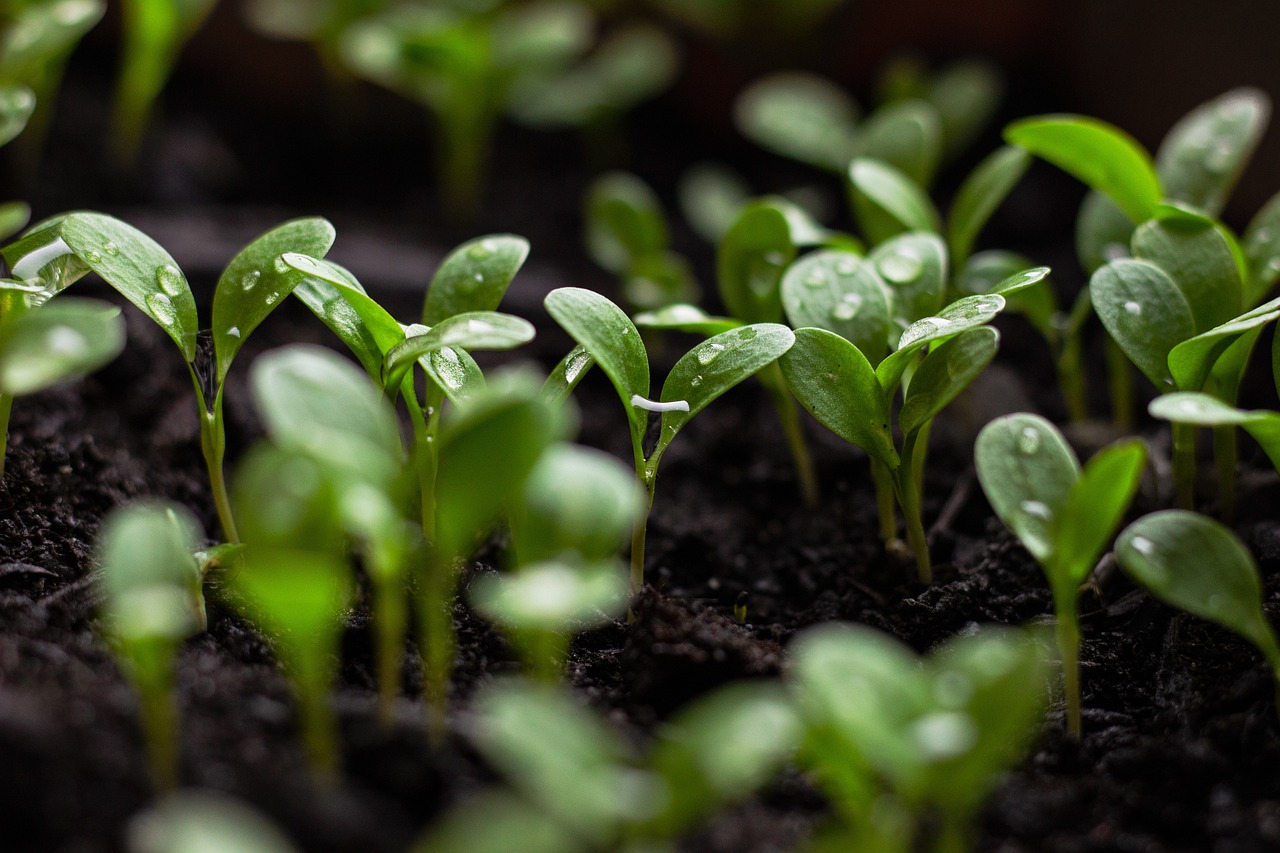Table of Contents
- In the world of perfumery, the selection of ingredients is a carefully orchestrated dance between nature’s bounty and scientific innovation. Fragrance creation is an art that hinges on the choice of ingredients and perfumers have a diverse palette at their disposal. Two key categories dominate this palette
- Harmony in Composition
- Sustainability and Ethical Considerations
In the world of perfumery, the selection of ingredients is a carefully orchestrated dance between nature’s bounty and scientific innovation. Fragrance creation is an art that hinges on the choice of ingredients and perfumers have a diverse palette at their disposal. Two key categories dominate this palette
natural extracts and synthetic compounds. In this article, we delve into the pivotal role that ingredients play in fragrance composition, exploring the qualities of both natural and synthetic elements and their impact on the art of perfumery.
At the heart of the captivating world of perfumery lies the exquisite symphony of ingredients—both natural extracts and synthetic compounds. These ingredients are the palette from which perfumers craft their olfactory masterpieces and their selection and harmonious blending are paramount to the art of perfumery. In this article, we embark on a fragrant journey to unravel the pivotal role that ingredients play in the intricate composition of fragrances, delving into the qualities of both natural and synthetic elements and how they collectively shape the enchanting world of perfumery.
The Essence of Nature: Natural extracts are the aromatic treasures gifted to us by the natural world. Derived from flowers, fruits, woods, resins and spices, these ingredients embody the essence of the earth’s botanical richness. They bring authenticity and depth to perfumes, offering a genuine connection to nature’s scents. The velvety petals of roses, the zesty zest of citrus fruits, the smoky resin of frankincense—all evoke a sensorial journey through the natural world.
The Art of Extraction: The process of extracting natural essences is a labor of love and precision. Perfumers employ various methods, such as steam distillation, solvent extraction and enfleurage, to capture the aromatic treasures hidden within botanicals. Each extraction method imbues the resulting essence with unique characteristics, ranging from the purity of steam-distilled oils to the richness of absolutes obtained through solvent extraction.
Synthetic Artistry: Synthetic compounds, on the other hand, are a testament to human ingenuity and scientific advancement. Perfumers rely on synthetic ingredients to expand their olfactory toolkit, enabling them to craft scents that either replicate natural aromas with unparalleled accuracy or venture into uncharted olfactory territory. These synthetic molecules, created in laboratories, offer consistency, stability and sustainability.
Endless Creativity: The marriage of natural and synthetic ingredients allows perfumers to embark on an artistic journey of endless creativity. They can blend the sweetness of natural vanilla with the warmth of synthetic musk or pair the freshness of natural bergamot with the longevity of synthetic fixatives. This dynamic interplay of ingredients grants perfumers the ability to shape a fragrance’s character and evolution.
Aromatic Balance: Perfume composition is akin to composing music or painting a masterpiece, with ingredients acting as notes on a fragrance scale. Perfumers meticulously balance and layer ingredients to create olfactory harmonies. The top, middle and base notes, each composed of a combination of natural and synthetic elements, unfold over time to tell a fragrant story on the skin.
The Perfumer’s Palette: A perfumer’s palette is a treasure trove of ingredients, both natural and synthetic, each possessing its own olfactory profile, volatility and longevity. These elements are carefully selected based on their ability to evoke emotions, tell stories and resonate with the fragrance’s intended audience.
Sustainability and Ethics: In today’s eco-conscious world, sustainability and ethical considerations have become increasingly important. Perfumers and fragrance houses are exploring sustainable sourcing of natural ingredients and adopting eco-friendly practices. Synthetic molecules offer a sustainable alternative, as they can be created without depleting natural resources or relying on animal-derived materials.
In conclusion, the art of perfumery is an intricate dance between nature’s bounty and human innovation, where natural extracts and synthetic compounds come together to create olfactory symphonies. Each ingredient, whether plucked from the earth or synthesized in a laboratory, adds a unique brushstroke to the canvas of fragrance composition. It is through the harmonious blending of these elements that perfumers craft scents that evoke emotions, tell stories and leave an indelible mark on the senses. As we explore the world of perfumery, we gain a deeper appreciation for the profound role that ingredients play in shaping the fragrant tapestry that envelops our lives.
Looking for more insights? You’ll find them right here in our extended coverage: Ultimate Guide To Ridley Scott And His Directing Techniques | Indie …

Harmony in Composition
The art of perfumery often involves a delicate balance between natural and synthetic ingredients. Perfumers use their expertise to craft compositions that harmonize these elements to achieve a desired olfactory profile. This can result in fragrances that capture the beauty of nature while also benefiting from the precision and versatility of synthetic compounds.
The artistry of perfumery is a captivating dance between nature’s bounty and human ingenuity, where perfumers orchestrate a symphony of scents by striking a delicate balance between natural and synthetic ingredients. This intricate craft calls upon their expertise to harmonize these elements, creating fragrances that are not just aromatic masterpieces but also reflections of the synergy between the organic and the man-made. Here’s how this delicate equilibrium unfolds:
Nature’s Elegance: Natural ingredients sourced from botanicals, flowers, fruits and resins are the heart and soul of many fragrances. They offer a rich tapestry of scents, each with its unique nuances and complexities. These natural essences capture the beauty of the outdoors, from the floral elegance of a blooming garden to the earthy richness of a dense forest. They provide the authenticity and depth that resonate with our senses.
Synthetic Precision: Synthetic compounds, on the other hand, offer perfumers a level of precision and versatility that nature alone cannot provide. These laboratory-crafted ingredients allow for the fine-tuning of fragrances, enabling perfumers to recreate specific scents, enhance longevity and achieve consistent results. They act as the skilled artisans’ toolkit, refining and perfecting compositions.
Innovative Possibilities: Synthetic ingredients open doors to innovative scent possibilities that are beyond the scope of natural essences. Perfumers can create novel accords, unconventional combinations and unique olfactory experiences that challenge traditional fragrance norms. This innovation fuels the constant evolution of perfumery, pushing the boundaries of what is possible.
Sustainability and Conservation: The use of synthetic compounds can also contribute to sustainability efforts. By reducing the demand for certain rare or endangered natural ingredients, perfumers help protect ecosystems and promote responsible sourcing practices. This commitment to conservation aligns with the principles of ethical and sustainable perfumery.
Consistency and Accessibility: Synthetic ingredients ensure consistency in fragrance formulations, allowing perfumers to replicate scents with precision across different batches. This reliability is vital for commercial perfumery, where consumers expect uniformity in their favorite fragrances. Synthetic compounds also make fragrances more accessible to a wider audience by controlling costs and increasing affordability.
Artistic Expression: Perfumery is, at its core, an art form. Perfumers, like painters or musicians, use their mastery to create compositions that resonate with emotions and memories. The delicate balance between natural and synthetic ingredients grants them a broad palette, where they can blend the best of both worlds to evoke complex emotions and tell olfactory stories.
In the world of perfumery, the synthesis of natural and synthetic elements is a testament to human creativity and our connection to the natural world. It’s a harmonious marriage that elevates fragrance creation to an art form where the boundaries of imagination are limitless. The result is a world of scents that captivate, inspire and transport us, reminding us of the beauty of both nature and human ingenuity.
To delve further into this matter, we encourage you to check out the additional resources provided here: Ingredients – The Perfume Society

Sustainability and Ethical Considerations
The choice of ingredients in modern perfumery is also influenced by sustainability and ethical considerations. The demand for sustainable and responsibly sourced natural ingredients is on the rise, leading to initiatives that support eco-friendly practices and the conservation of endangered plant species.
In the ever-evolving landscape of modern perfumery, the selection of ingredients is not solely guided by artistic vision and fragrance trends; it is increasingly shaped by ethical and sustainability imperatives. This transformative shift reflects a growing awareness within the industry and among consumers about the impact of perfume production on the environment and the global ecosystem.
Sustainable Sourcing Practices: One of the most significant changes in recent years is the industry’s shift towards sustainable ingredient sourcing. Perfumers and fragrance houses are actively seeking out suppliers who adhere to responsible harvesting practices. These practices ensure that natural ingredients, such as exotic woods, resins and floral essences, are sourced in a manner that promotes ecosystem health and supports local communities.
Biodiversity Conservation: As the fragrance industry relies heavily on botanical ingredients, there is a heightened focus on the conservation of biodiversity. Many perfume brands are partnering with organizations and initiatives dedicated to preserving and protecting endangered plant species. This commitment not only safeguards the rich tapestry of botanical life but also ensures a sustainable supply of fragrance ingredients for future generations.
Support for Local Communities: Sustainability in perfumery extends beyond ecological concerns; it also encompasses social responsibility. Ethical sourcing practices often involve fair wages and support for local communities where fragrance ingredients are harvested. This approach fosters a positive impact on the livelihoods of those involved in the industry’s supply chain.
Synthetic Alternatives: Perfumers are increasingly exploring synthetic alternatives to traditional fragrance ingredients, particularly when natural sources are endangered or overharvested. These synthetics can mimic the olfactory profiles of natural ingredients, providing creative solutions that reduce pressure on fragile ecosystems.
Eco-Friendly Extraction Methods: The extraction and processing of fragrance ingredients are being reimagined with sustainability in mind. Innovations in eco-friendly extraction methods, such as carbon dioxide extraction and enzyme-assisted extraction, minimize the use of solvents and energy, reducing the environmental footprint of perfume production.
Transparent Labeling: Ethical and sustainability considerations are also reflected in product labeling. Consumers are becoming more discerning and are seeking transparency regarding the sourcing and environmental impact of their fragrances. Brands that champion sustainable practices often provide clear information about their ingredients and commitments.
Consumer Demand: Ultimately, it’s consumer demand that’s driving these changes. As more individuals prioritize eco-conscious and ethical consumption, fragrance brands are compelled to respond by adopting sustainable practices and embracing responsible sourcing.
In summary, the fragrance industry’s embrace of sustainability and ethical considerations marks a significant turning point in the world of perfumery. It’s a transformative journey that aligns the art of fragrance creation with a profound sense of responsibility towards the planet and its inhabitants. This shift not only enriches the olfactory tapestry of our lives but also ensures that the scents we adore today will continue to be available for generations to come, all while promoting environmental and social well-being.
You can also read more about this here: Natural Fragrances vs Synthetics Scents – Malibu Apothecary

The world of perfumery is a testament to the creativity and ingenuity of both nature and science. Natural extracts offer the elegance and authenticity of botanical treasures, while synthetic compounds provide the versatility and innovation that drive modern fragrance creation. Together, they form the foundation of a perfumer’s artistry, allowing them to craft scents that captivate and inspire. The dynamic interplay between natural and synthetic ingredients continues to shape the ever-evolving landscape of perfumery, ensuring that fragrance remains an enchanting and deeply personal experience for all.
Certainly, let’s delve deeper into the harmonious interplay between natural and synthetic ingredients in the world of perfumery and how this creative blend continues to shape the art of fragrance creation:
Harmony of Nature and Science: Crafting the Perfumer’s Masterpiece
The Elegance of Nature: Natural extracts, derived from flowers, fruits, spices and woods, are the soul of perfumery. They carry the authenticity and essence of botanical treasures that have fascinated humanity for centuries. These pure essences offer a timeless connection to the natural world, evoking emotions and memories deeply rooted in our collective consciousness.
The Versatility of Synthetics: Synthetic compounds, on the other hand, empower perfumers with a vast palette of possibilities. These laboratory-crafted ingredients allow for precise control over scent profiles, offering unparalleled versatility. Synthetics provide perfumers with the ability to recreate natural scents, enhance longevity and explore innovative olfactory territories that might not exist in nature.
The Art of Blending: Perfumers are like skilled composers, blending natural and synthetic notes to orchestrate harmonious scent symphonies. They carefully balance the authenticity of natural ingredients with the precision of synthetics to create fragrances that resonate with a diverse range of preferences and emotions.
Innovation and Consistency: Synthetic ingredients ensure consistency and reliability in fragrance production. They allow perfumers to recreate beloved scents year after year, ensuring that consumers can always find their favorite fragrances on the market. This reliability is crucial in an industry that demands both creativity and consistency.
Sustainable Practices: The interplay between natural and synthetic ingredients is also aligned with sustainability. While natural resources must be responsibly sourced to protect ecosystems, synthetics can help reduce the environmental impact of harvesting certain botanicals. This balance supports the industry’s growing commitment to sustainability.
Personalized Fragrance Profiles: The fusion of natural and synthetic ingredients paves the way for personalized fragrance experiences. Perfumers can tailor scents to individual preferences, creating bespoke fragrances that resonate with specific tastes and memories. This personalization transforms fragrance into a form of self-expression.
Captivating and Evolving Scents: The dynamic interplay between natural and synthetic ingredients keeps the world of perfumery exciting and ever-evolving. It ensures that consumers have access to a wide array of scents, from timeless classics that honor tradition to innovative creations that push the boundaries of olfactory art.
The Emotional Connection: Ultimately, the art of perfumery transcends the ingredients themselves. It’s about evoking emotions, stirring memories and creating deeply personal connections. Whether a fragrance leans more on natural or synthetic elements, its success lies in its ability to touch the human heart.
In conclusion, the world of perfumery thrives on the symbiotic relationship between nature and science. Natural extracts and synthetic compounds are the building blocks of a perfumer’s artistry, allowing them to craft scents that captivate the senses and inspire emotions. This creative blend ensures that fragrance remains a dynamic and deeply personal experience for all, a testament to the enduring magic of scent in our lives.
Additionally, you can find further information on this topic by visiting this page: Towards Advances in Medicinal Plant Antimicrobial Activity: A …
More links
Additionally, you can find further information on this topic by visiting this page: The Different Types of Perfumery Ingredients And How They Are …
